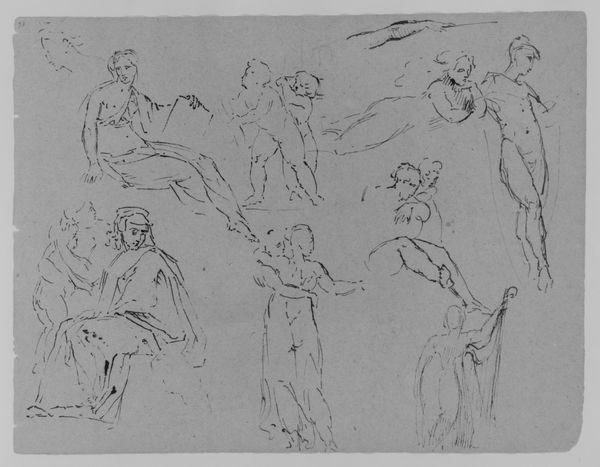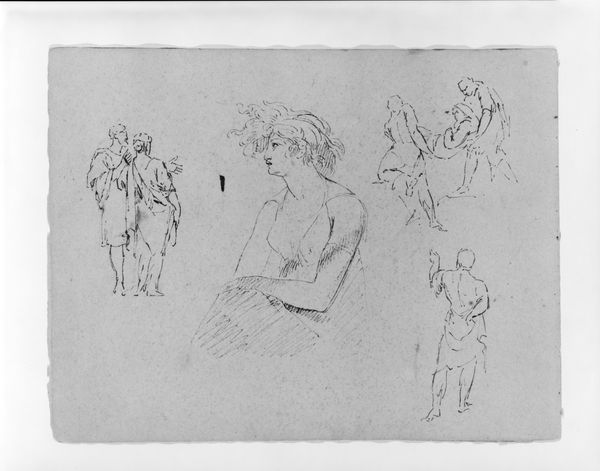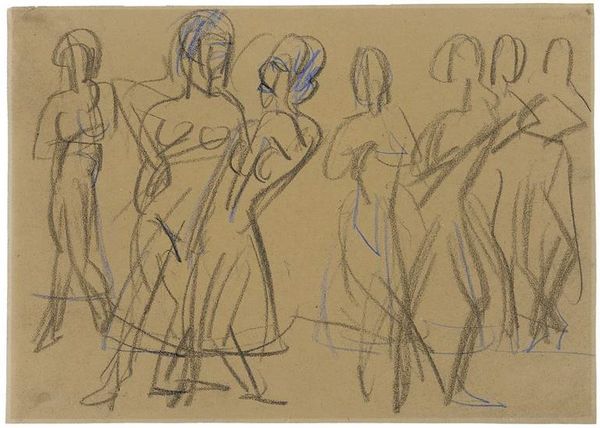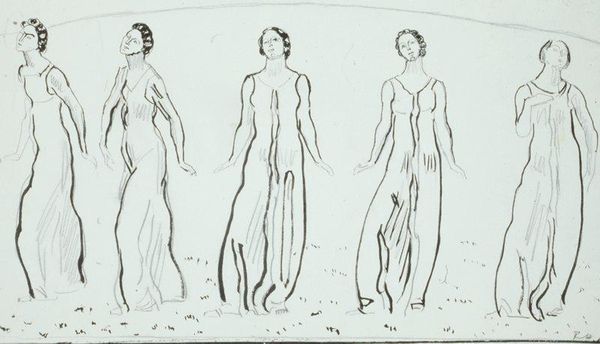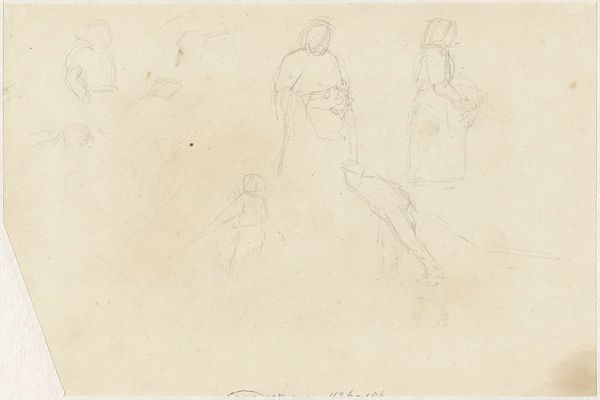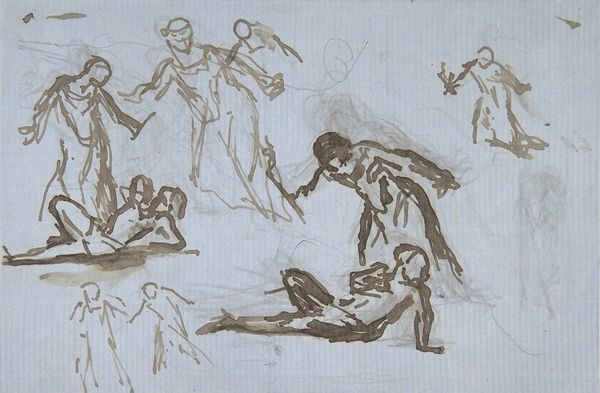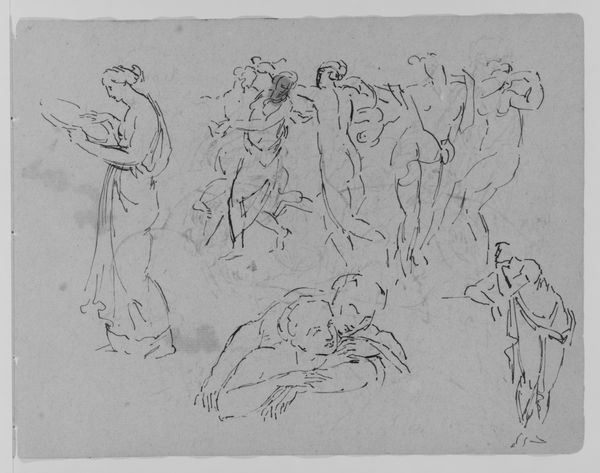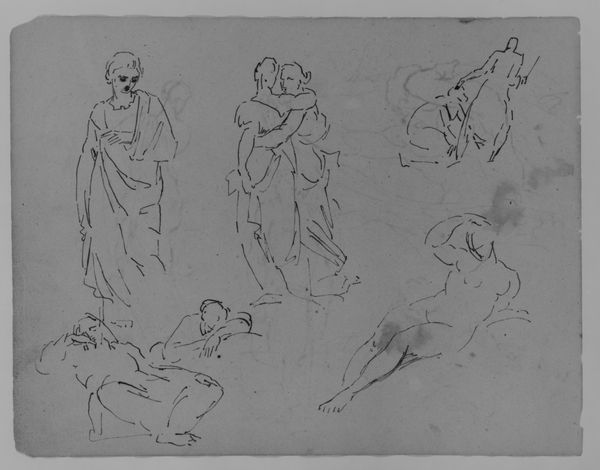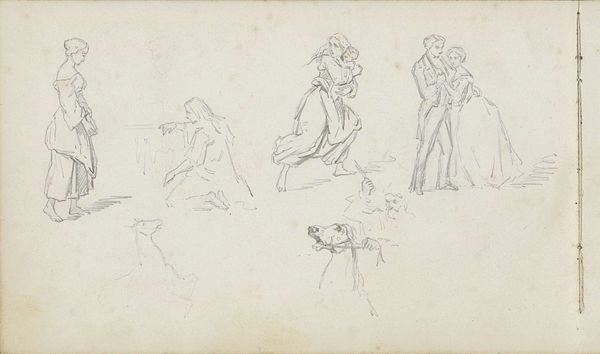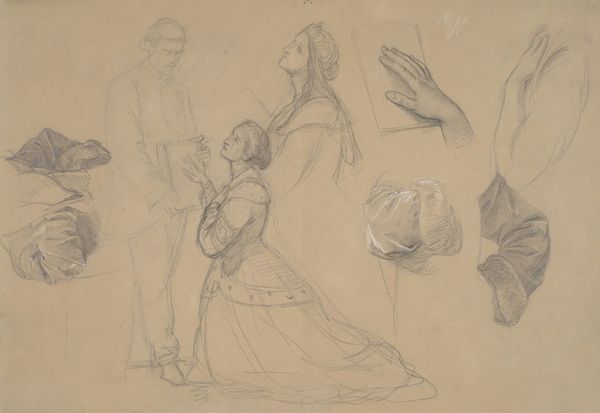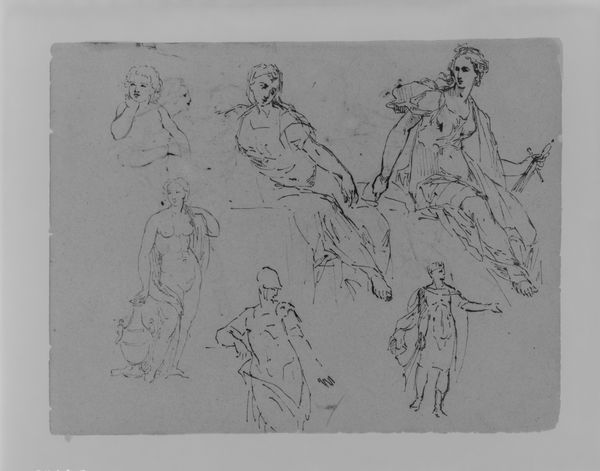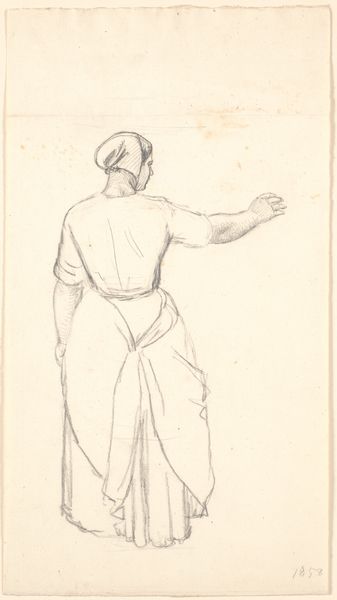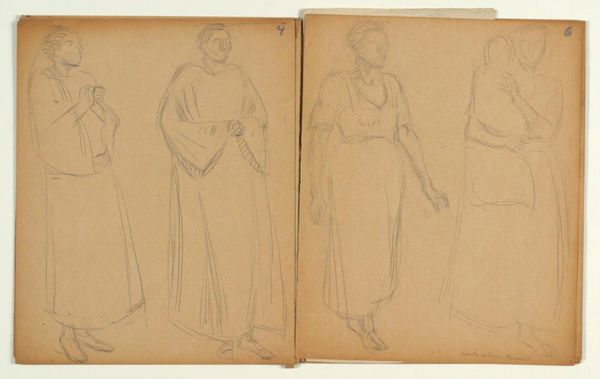
Dimensions: 163 mm (height) x 249 mm (width) (bladmaal)
Jean-Baptiste Carpeaux rendered these seven studies of dancers using graphite, capturing fleeting moments of movement and repose. The motif of the dancer extends far back, echoing in ancient Greek sculptures and vase paintings, where dance was often linked to ritual and celebration. Consider the pose of the central figure with hands on her hips: a stance that simultaneously exudes confidence and vulnerability. This gesture recurs across centuries, from Renaissance portraits to contemporary fashion photography, each time subtly shifting in meaning. It embodies not only physical presence but also a complex interplay of social and personal identity. The act of dancing itself, like other forms of embodied expression, taps into primal energies and collective memories, bypassing rational thought to communicate directly with the subconscious. The emotional power of dance engages viewers on a deep, subconscious level. Note the non-linear, cyclical progression of symbols: they resurface, evolve, and take on new meanings in different historical contexts.
Comments
No comments
Be the first to comment and join the conversation on the ultimate creative platform.

